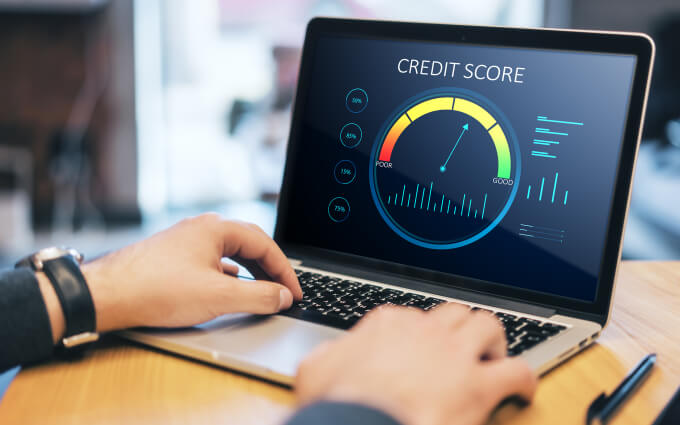- Home
- Money Tips & Advice
- How to Build an Emergency Fund and Why It's Important
How to Build an Emergency Fund and Why It's Important
Creating an emergency fund is essential for financial stability. This guide covers why it's important and provides practical steps to build your own safety net.

- 26

Why an Emergency Fund is Non-Negotiable
Imagine cruising down life's highway and suddenly hitting a pothole. That's what unexpected expenses feel like – an unwelcome jolt that throws you off balance. An emergency fund is your financial shock absorber, cushioning the blow of life's inevitable surprises. But why is it so important?
Firstly, an emergency fund prevents you from spiraling into debt when unexpected costs arise. Car repairs, medical bills, or sudden job loss – without a financial buffer, these events can lead to credit card debt or loans with hefty interest rates. Secondly, having this fund provides peace of mind. Knowing you have a safety net allows you to face financial challenges without panic, making rational decisions easier. Lastly, it gives you the freedom to take risks and opportunities, like starting a business or changing careers, without the fear of financial ruin.
Key Reasons to Have an Emergency Fund
- Protection against unexpected expenses
- Reduction in financial stress
- Ability to seize opportunities
Setting Your Emergency Fund Goal
Now that you know why an emergency fund is essential, let's talk numbers. How much should you save? Financial experts typically recommend having three to six months' worth of living expenses set aside. This range provides a cushion for most emergencies, from job loss to major home repairs.
To calculate your target amount, start by listing your essential monthly expenses: rent or mortgage, utilities, groceries, insurance, transportation, and minimum debt payments. Multiply this total by the number of months you want your fund to cover. Voila, you've got your savings goal.
Steps to Determine Your Savings Goal
- List monthly essential expenses
- Multiply by 3-6 months
- Adjust based on personal comfort level and job stability
How to Build Your Emergency Fund
Building an emergency fund might seem daunting, especially if you're starting from scratch. But don't worry, every little bit counts, and with a strategic approach, you'll get there faster than you think.
Create a Budget
The first step is to create a budget. Track your income and expenses to see where your money is going. Identify areas where you can cut back, like dining out or subscription services, and redirect those funds into your emergency savings.
Set Up Automatic Transfers
Out of sight, out of mind – that's the secret to saving. Set up automatic transfers from your checking account to a dedicated savings account. This way, you’re consistently building your fund without having to think about it.
Boost Your Income
If your budget is already tight, consider ways to boost your income. This could be through a side hustle, freelance work, or selling unused items around your house. Every extra dollar you earn can accelerate your savings.
Use Windfalls Wisely
Tax refunds, bonuses, or monetary gifts can give your emergency fund a significant boost. Instead of splurging, put a portion (or all) of these windfalls into your savings.
Track Your Progress
Keeping an eye on your progress can be incredibly motivating. Use a savings app or a simple spreadsheet to track how much you’ve saved and how close you are to reaching your goal.
Maintaining Your Emergency Fund
Congratulations! You’ve built your emergency fund. Now, how do you maintain it? The key is to keep the fund replenished. After using it for an emergency, make it a priority to top it back up to your target amount.
Review Your Budget Regularly
Life changes, and so should your budget. Regularly review your budget to ensure it aligns with your current financial situation. Adjust your savings goals if necessary to maintain a robust emergency fund.
Avoid Temptation
Your emergency fund should be reserved for true emergencies. It’s not a vacation fund or a new gadget fund. Define what constitutes an emergency for you and stick to it.
Keep It Accessible, But Not Too Accessible
Your emergency fund should be easy to access in a pinch but not so accessible that you’re tempted to dip into it for non-emergencies. A high-yield savings account is often a good choice – it earns interest while keeping your money relatively liquid.
Conclusion
Building an emergency fund is one of the smartest financial moves you can make. It shields you from unexpected expenses, reduces stress, and gives you the freedom to pursue opportunities. Start small, stay consistent, and watch your financial safety net grow. Remember, it’s not just about the money – it’s about peace of mind and financial security. So, what are you waiting for? Start building your emergency fund today!
- 26
 Chris Anderson
Chris Anderson
Chris is a seasoned financial advisor with over 15 years of experience in the finance industry. He has worked with a variety of clients ranging from individuals to large corporations, helping them navigate the complexities of financial planning. Chris is known for his practical advice on money management and his ability to break down intricate financial concepts into understandable terms. He frequently writes about tips and advice on money management, stocks and investments, loans and credit, making money online, and taxes and accounting.
-
Money Tips & Advice
 Effective Budgeting Strategies and How to Stick to Them
Effective Budgeting Strategies and How to Stick to ThemLearn how to master your finances in 2024 with these effective budgeting strategies. Discover methods like the 50/30/20 rule, digital tools, and tips for staying on track.
 Chris AndersonJul 24, 202422
Chris AndersonJul 24, 202422 -
Money Tips & Advice
 How to Pay Off Debt Faster: Proven Strategies to Stay Debt-Free
How to Pay Off Debt Faster: Proven Strategies to Stay Debt-FreeEliminate your debt faster with proven strategies like the avalanche method, consolidation, budgeting hacks, and side hustles to stay debt-free for the long haul.
 Chris AndersonSep 20, 202439
Chris AndersonSep 20, 202439 -
Money Tips & Advice
 Tips to Reduce Daily Expenses Without Sacrificing Your Quality of Life
Tips to Reduce Daily Expenses Without Sacrificing Your Quality of LifeCutting down on daily expenses doesn't mean giving up the good things in life. Discover practical tips for saving money while maintaining a high quality of life, from savvy shopping techniques to creative lifestyle adjustments.
 Alex JensenAug 18, 202416
Alex JensenAug 18, 202416 -
Taxes & Accounting
 Essential Accounting Tips for Freelancers and Self-Employed Professionals
Essential Accounting Tips for Freelancers and Self-Employed ProfessionalsMaster the essentials of accounting tailored specifically for freelancers and self-employed professionals. From tracking expenses to understanding taxes, this guide has got you covered.
 Mira JohnsonAug 24, 202426
Mira JohnsonAug 24, 202426 -
Loans & Credit
 How to Find the Best Personal Loans: Tips and Tricks
How to Find the Best Personal Loans: Tips and TricksNavigate the personal loan landscape with confidence using our expert tips and tricks. From understanding rates and terms to choosing the right lender, we've got you covered.
 Alex JensenAug 21, 202422
Alex JensenAug 21, 202422 -
Loans & Credit
 What’s the Difference Between Secured and Unsecured Loans?
What’s the Difference Between Secured and Unsecured Loans?Secured and unsecured loans may seem similar, but their differences are key when choosing the right option for your financial needs. Learn how collateral, interest rates, and risk come into play for each type of loan.
 Mira JohnsonOct 02, 202426
Mira JohnsonOct 02, 202426 -
Money Tips & Advice
 10 Simple Ways to Reduce Your Monthly Expenses
10 Simple Ways to Reduce Your Monthly ExpensesManaging your monthly budget doesn't have to be a daunting task. By implementing these ten straightforward strategies, you can reduce your expenses and increase your savings without sacrificing your lifestyle.
 Mira JohnsonAug 30, 202428
Mira JohnsonAug 30, 202428 -
Make Money Online
 How to Start Freelancing and Find Your First Clients
How to Start Freelancing and Find Your First ClientsThis guide walks you through the steps to kickstart your freelancing career, from building a portfolio to landing your first clients, with tips and tricks for success along the way.
 Mira JohnsonAug 09, 202428
Mira JohnsonAug 09, 202428 -
Loans & Credit
 Tips and Strategies for Credit Score Improvement
Tips and Strategies for Credit Score ImprovementExplore the ins and outs of credit scores, understand the factors that influence them, and discover practical steps to enhance your score for better financial opportunities.
 Mira JohnsonJul 29, 202415
Mira JohnsonJul 29, 202415 -
Make Money Online
 Passive Income Through Investing: How to Earn While You Sleep
Passive Income Through Investing: How to Earn While You SleepUnlock the secret to making money while you sleep through savvy investments. From dividend-paying stocks to real estate, we’ll show you how to create reliable streams of passive income without endless effort.
 Alex JensenSep 26, 202434
Alex JensenSep 26, 202434










